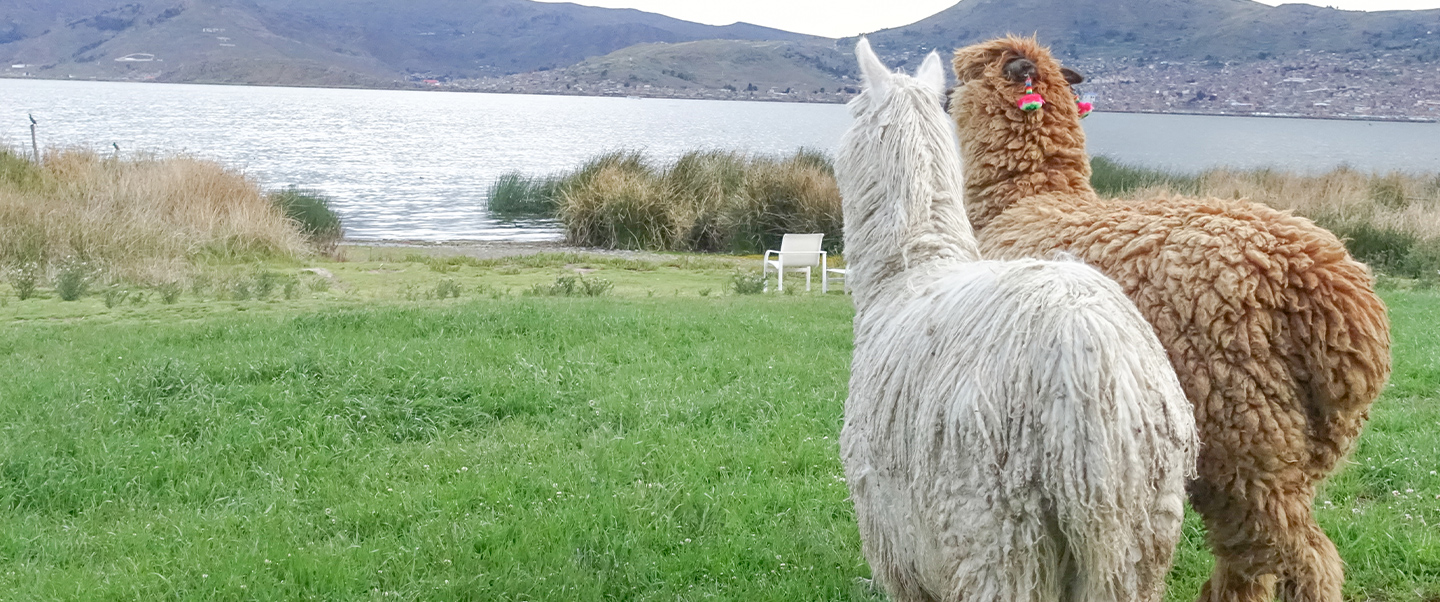Notas
Millennial Legacy
Tuesday, 21 de July de 2020The world needs alpaca (and it comes from Peru)
The Puno region is the epicenter of one of the most elegant fibers on the planet.
Peru is the country of the alpaca. 80% of the world the alpaca fiber production comes from the land of the Incas. And the region that contributes the most with this number is Puno (39.6% of production), followed by Cusco, Arequipa, Huancavelica, among other regions.
In the Andes of Peru, over 3,500 meters above sea level, where temperatures drop to ten degrees below zero, this noble fluffy-bodied camelid, descendant of the vicuña, whose fleece is considered the finest fiber in the world, grows.
Now, why do we need so much of this resource extracted from the heart of the Andes? Alpaca is an essential part of a long tradition started 5,000 years ago with the first Peruvian weavers.
Symbol of distinction
It turns out that pre-Inca cultures highly valued the use of organic fibers for making their outfits. Among them were cotton and alpaca. The latter was highly appreciated especially by the imperial class due to its high quality. The noble fiber gave way to multiple garments that pleased the emperor and his nearby court. Its use was combined with certain accessories, such as bracelets, rings and necklaces, which together made a symbol of distinction and status.
Similarly, today, alpaca occupies a privileged place in the fashion world. The best showcases in Europe, Asia and North America are full of jerseys, jackets, coats, ponchos, vests, among other items made from the best Peruvian alpaca.
PROMPERÚ promotes the export of alpaca fiber and garments through the sector brand Alpaca del Peru, which works with producers throughout the country under strict quality standards and in the best possible environment with nature and with workers.
Superior quality
Alpaca fiber is known to be three times stronger than sheep fiber and seven times hotter. In other words, it not only combats heat loss, but is kept in the wardrobe, which avoids the need to buy a greater number of garments. Alpaca is thin and light, and has a silky sheen that lasts despite washing. It does not retain water and resists solar radiation.
As if that were not enough, it is hypoallergenic (ideal for young children as well as the elderly) and offers more than 22 natural colors, although it can also be dyed. All a wonder of nature.
Good practices
The alpaca workers chain in Peru has inherited a millennial tradition of coexistence, respect, care and well-being of the alpaca. The Peruvian Government regulates the alpaca production chain through the following technical-productive regulations:
NTP 231.370: Good livestock practices for the shearing and management of alpaca fiber fleece.
NTP 231.300: Definitions, categorization, requirements and labeling of alpaca fiber on fleece.
TP 231.301: Definitions, classification by quality groups, requirements and labeling of the classified alpaca fiber.
These protocols apply throughout the alpaca value chain; that is, from the raising of the mammal to the export and distribution of the garments, which aims to be an example of ethical and responsible behavior of this sector for the world.
Opportunity for progress
It is fair that good productive practices such as those of the Peruvian alpaca obtain recognition in the market. In fact, despite the health crisis facing the various countries, alpaca exports continue to be the main opportunity for progress for more than 120,000 Peruvian families. Let us not forget that Puno, being the epicenter of the production of this fiber, is, at the same time, one of the regions with the highest incidence of monetary poverty in Peru (from 34.4 to 39.4% according to the National Institute of Statistics and Informatics).
But right there, where the Puna wind freezes us all to the bones, thousands of Puno weavers have been sewing their futures for 5,000 years.
In 2019, the total export of alpaca fiber from Peru reached US $ 57,483,000. The amount could be higher. It depends on all of us.

.jpg)

